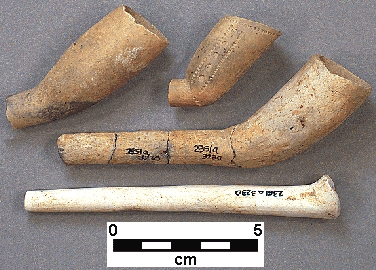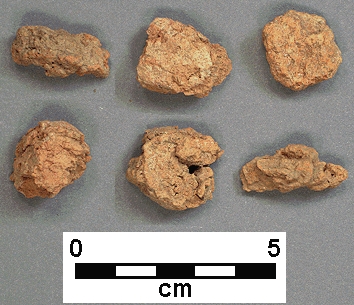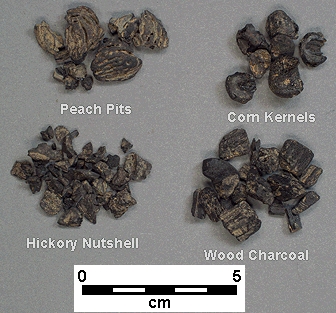Common Artifact Types (1/2)
Below are some of the common types of artifacts found at Occaneechi Town
Animal bones were commonly found in archaeological features at the Fredricks site. Most of these bones are from animals that were hunted or caught for food (such as deer, bear, raccoon, turkey, and fish).
Small brick fragments occur in the plowed soil at the Fredricks site and are associated with European settlement in the area after about 1750.
Charcoal was commonly found in archaeological features at the Fredricks site. Most of this charcoal is from wood used as fuel; however, plants that were grown or collected for food also are amply represented by seeds, nutshells, and (occasionally) other parts.
Chipped-Stone Projectile Points: The Occaneechi and their predecessors used the bow-and-arrow as a weapon. Their arrows were tipped with small triangular points that were chipped from stone. Much earlier inhabitants of the site (before about 1,000 B.C.) used larger stemmed or notched, chipped-stone points to tip spears.
Clay Pipe Fragments: the Occaneechi smoked tobacco, and possibly other plants. This is reflected by the numerous clay pipe-stem and pipe-bowl fragments that were found. Some of these were made by Native Americans (probably including the Occaneechi) but many were made of English kaolin clay (at bottom) and acquired through trade.
Daub and fired clay are created when clay is hardened by fire. Daub represents mud plaster used to construct wattle-and-daub houses. It normally exhibits stick impressions from the wattle. Fired clay lacks the stick impressions and may represent daub, plaster from around the smoke hole in the roof, or pieces of a hearth.
Flakes are by-products of making chipped-stone tools. They usually are small, made of rhyolite or some other type of rock with conchoidal (glass-like) fracture properties, and have recognizable characteristics which allow them to be readily distinguished from unmodified rocks.
Last updated






